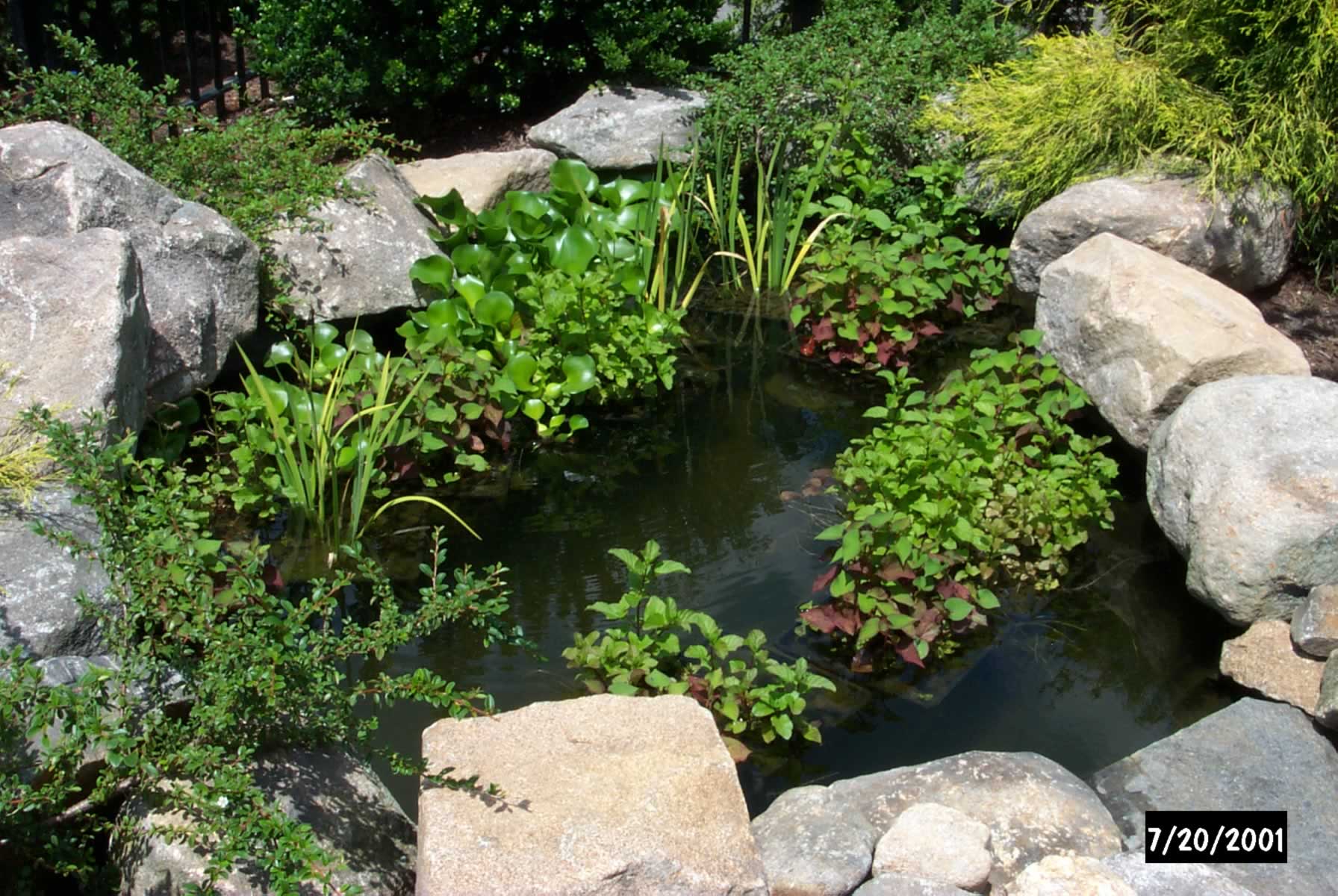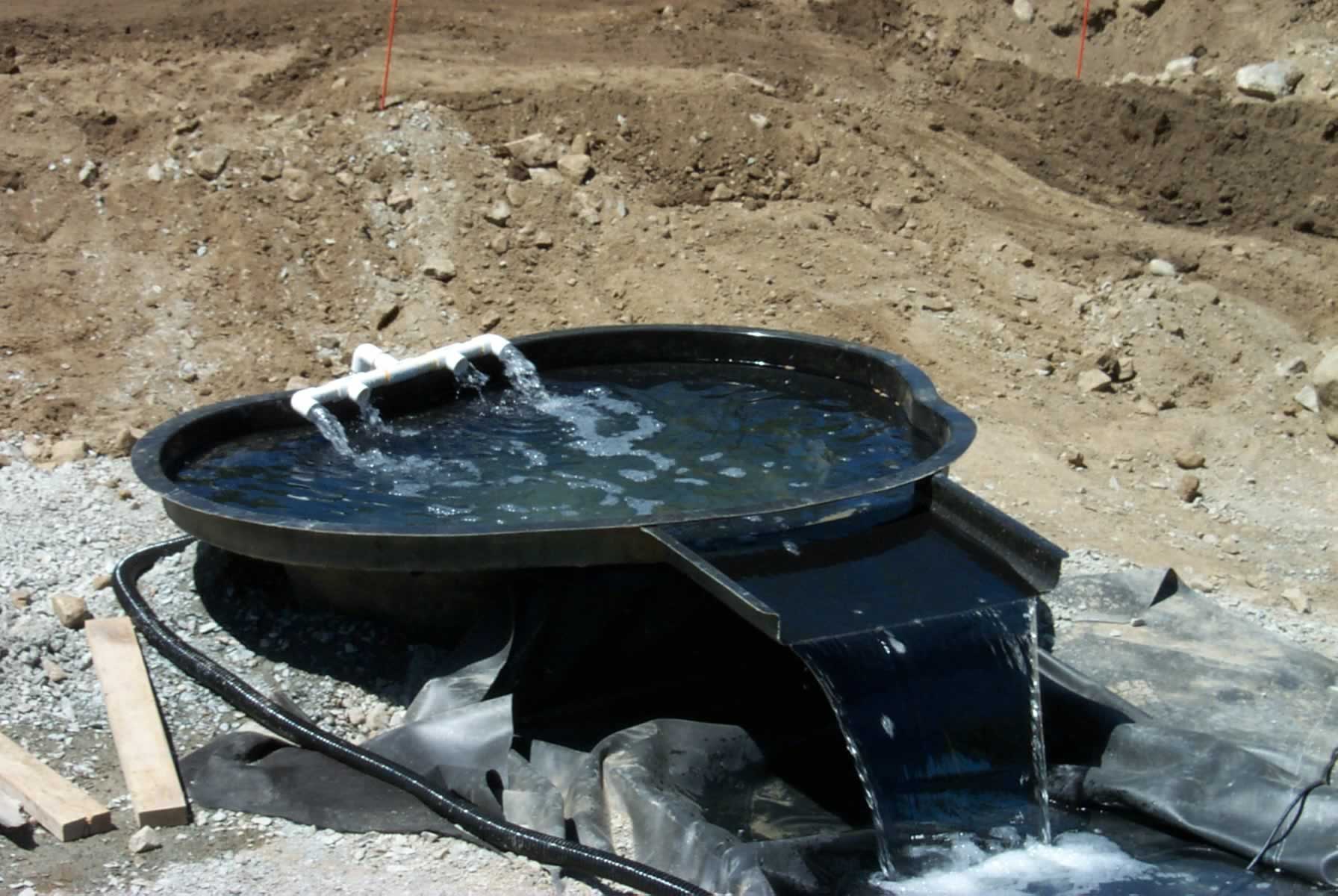Wetland Filtration

How to set up and integrate a “Wetland”
Filter
How does it work?
It works by pumping water through a “Wetland” element,
which can be a small pool
or bog area located outside of the pond. All you need is plants and lava rock
to put it

all together.
What type of plants should be used?
Tropicals- Water Hyacinths, Green Taro,
Fairy Moss, Umbrella Palm, Dwarf Umbrella, and Chinese Water Chestnut
Hardy- Cattails, Water Celery, Hemerocallis fulva, Water Mint, and Forget-
me-not
These will grow so rapidly that by July you will be depriving that algae of nutrients with each new leaf.
You can also stock your vegetative filter with Duckweed and Azolla to grow your own fish food.
Lava Rock
The “biological” aspect
of the filter is developed with an area of lava rock that provides surface area
for the nitrifying bacteria that convert ammonia into nitrites and nitrites
into nitrates, These bacteria consume oxygen and are active at 50 - 60 degrees
and above. This should be “seeded” at start-up and periodically boosted
with ABA bacteria.
How to put it all together
Set the preformed pool or liner on the outside of
the pond where you would like the waterfall or stream.(Streams add more aeration
and filtration to the pond)
We recommend that you have a bottom drain in you filter for easy cleaning. Most preformed pools will have this, if yours dosen't make sure you ask the retail store where you have purchsed it for one with a bottom drain. If your using a liner it's more difficult to use a bottom drain, because they may leak if not properly installed.
Take the plants out of their pots and place them in a medium size mesh square basket 9.5" by 6". Then fill in the basket around the plants with Lava Rock and place them in your filter. The plants do not need the soil once placed in the Lava Rock. (The reason we rcommend you put them in baskets is, because if you don't you will eventually have a solid mass of roots and plants that won't be easy to clean.)
DON'T FORGET The fish in your pond and the bacteria in your filter both require an adequate level of oxygen in the water.Good filter design incorporates aeration before and after the filter using spray bars and waterfalls, or even simply having the inlet tubing elevated above the water level.
Rough Rule for Size
1 square foot of wetland for every 12 square feet of pond
surface.
Water Flow through the filter
Water flow through the filter should be slow enough
to allow for bacterial activity,
gravity, and plant roots to remove
particulate matter. Generally this works
out to be one pond volume change for every 4-6 hours. To achieve maximum
filtration a settlement chamber and distribution system should be incorporated
and water should be aerated entering and leaving the filter.
When and How should the filter be cleaned?
It is said that “a dirty filter is a working filter.”
The filter should be “cleaned” only when it has collected so much
sediment that water no longer flows through it effectively. At that point it
should be backwashed with pond water just enough to cause most of the sediment
to drain out. A bottom drain on the wetland
filter makes backwashing simple.
Do Not use
chlorinated water, high pressure or “scrubbing” when cleaning the
filter, because that will destroy the bacteria population. It takes 4 to 12
weeks for an overcleaned filter to become fully effective.
Be sure to thin out the plants during the season as needed so that they have room to grow. Clip their roots right up to the basket so that they can then flush out again.
A settlement chamber will reduce the amount of sediment entering the biological component and reduce the frequency of required cleaning. (A settlement chamber is a separate pool or section of a pool or filter where gravity serves to collect suspended solids out of the pond water.)
Please remember that most water gardens can be kept clean very simply. Larger ponds, higher fish populations and lower plant populations will lead to the need for more complex filtration solutions. Careful forethought and good advice will enable you to simply add components to increase efficiency and to expand capacity when growth and additions require. For larger pools, a compound filter solution will maximize all aspects of filtration and minimize filter maintenance.